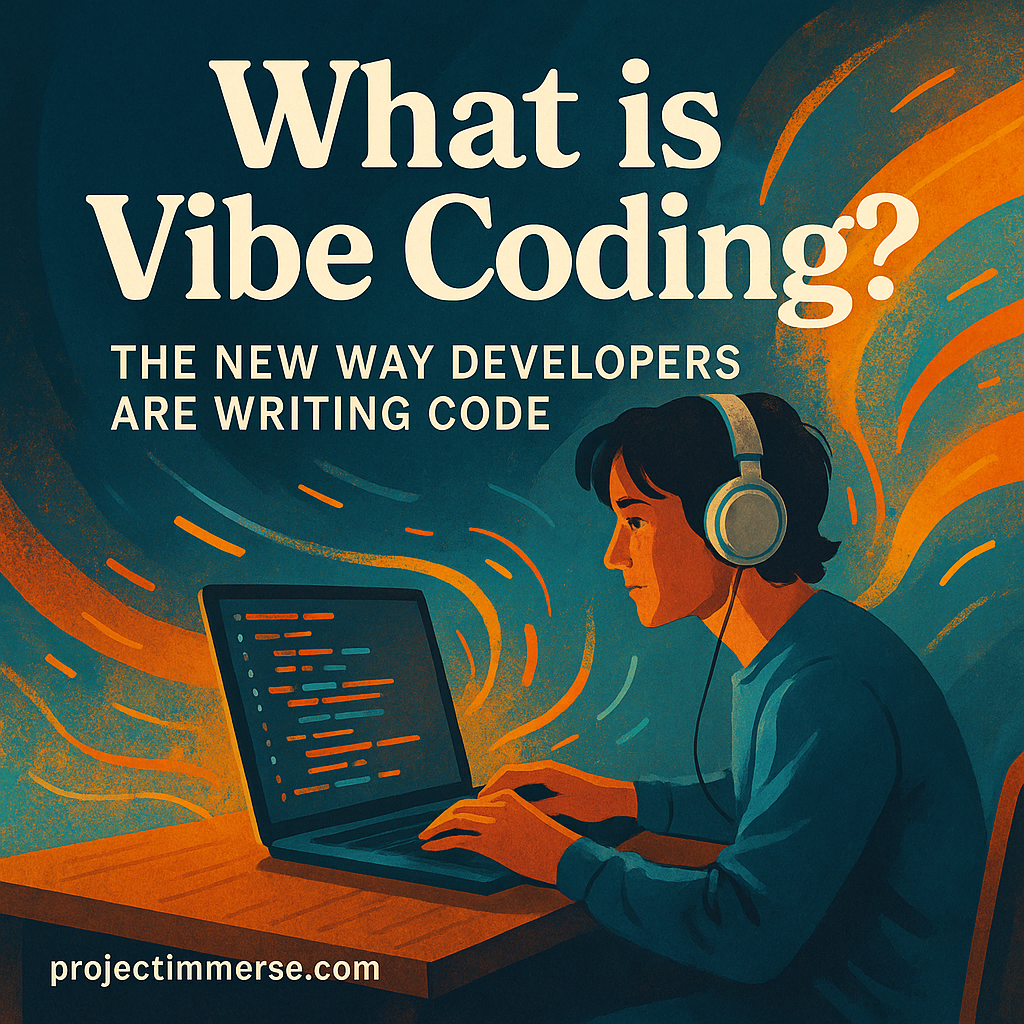
Coding used to be all about structure, rules, and precision. But in 2025, a new approach is reshaping the way developers work: vibe coding. Instead of forcing yourself into rigid patterns, vibe coding is about writing code in a state of flow — where productivity meets creativity and you actually enjoy the process.
The Vibe Coding Mindset
Vibe coding isn’t about sloppiness or chaos. It’s about coding in a way that feels natural. Think of it like musicians jamming together: you’re building something structured, but the process has energy, rhythm, and style. Developers are embracing environments that make them feel inspired — coffee shops, lo-fi playlists, late-night sprints, or AI copilots at their side.
Traditional approaches to programming often make coding feel heavy and mechanical. Vibe coding changes that. It encourages you to treat coding as a mix of art and science — where the journey of writing code matters just as much as the end product.
Tools That Make Vibe Coding Possible
If you want to try vibe coding, your setup matters. Here are some essentials:
- AI copilots: Tools like GitHub Copilot or ChatGPT keep the flow going without constant context switching.
- Custom VS Code setups: Themes, extensions, and shortcuts that feel personal and aesthetic.
- Music & atmosphere: Lo-fi beats, synthwave, or any playlist that helps your brain lock into rhythm.
- Mechanical keyboards: Developers swear by the tactile feedback and sound for keeping momentum.
The point isn’t just the tools themselves, but how they fit into your environment and mindset. Vibe coding thrives on small rituals and sensory cues that get you into the zone.
Why Vibe Coding Matters
Developers burn out when coding feels like a grind. Vibe coding flips the perspective. By focusing on atmosphere, rhythm, and creative energy, developers can:
- Reduce burnout by enjoying the process
- Stay productive with fewer interruptions
- Write cleaner, more inspired code
- See coding as art, not just engineering
This isn’t just about mood — there’s real productivity science behind it. Flow states have been shown to increase efficiency and focus. When developers feel aligned with their environment, they solve problems faster and with more creativity.
Practical Tips for Getting Into the Vibe
Here are a few ways to experiment with vibe coding in your daily workflow:
- Start with a ritual: coffee, playlist, or lighting setup before coding.
- Block distractions with site blockers or noise-canceling headphones.
- Use Pomodoro or flow-timers to stay focused without losing energy.
- Switch environments — try coding at a café, co-working space, or standing desk.
- Customize your editor so it feels like your creative workspace, not just a tool.
The goal is to make coding something you look forward to, not something you slog through.
The Future of Vibe Coding
As AI tools continue to evolve, vibe coding will only grow stronger. Developers will focus less on repetitive syntax and more on creative problem-solving, design, and innovation. The future of programming isn’t just efficient — it’s enjoyable, human, and full of personality. That’s the heart of vibe coding.
Project Immerse will continue exploring how programming culture is shifting — from new frameworks and AI tools to the everyday rituals that make coding more inspiring.